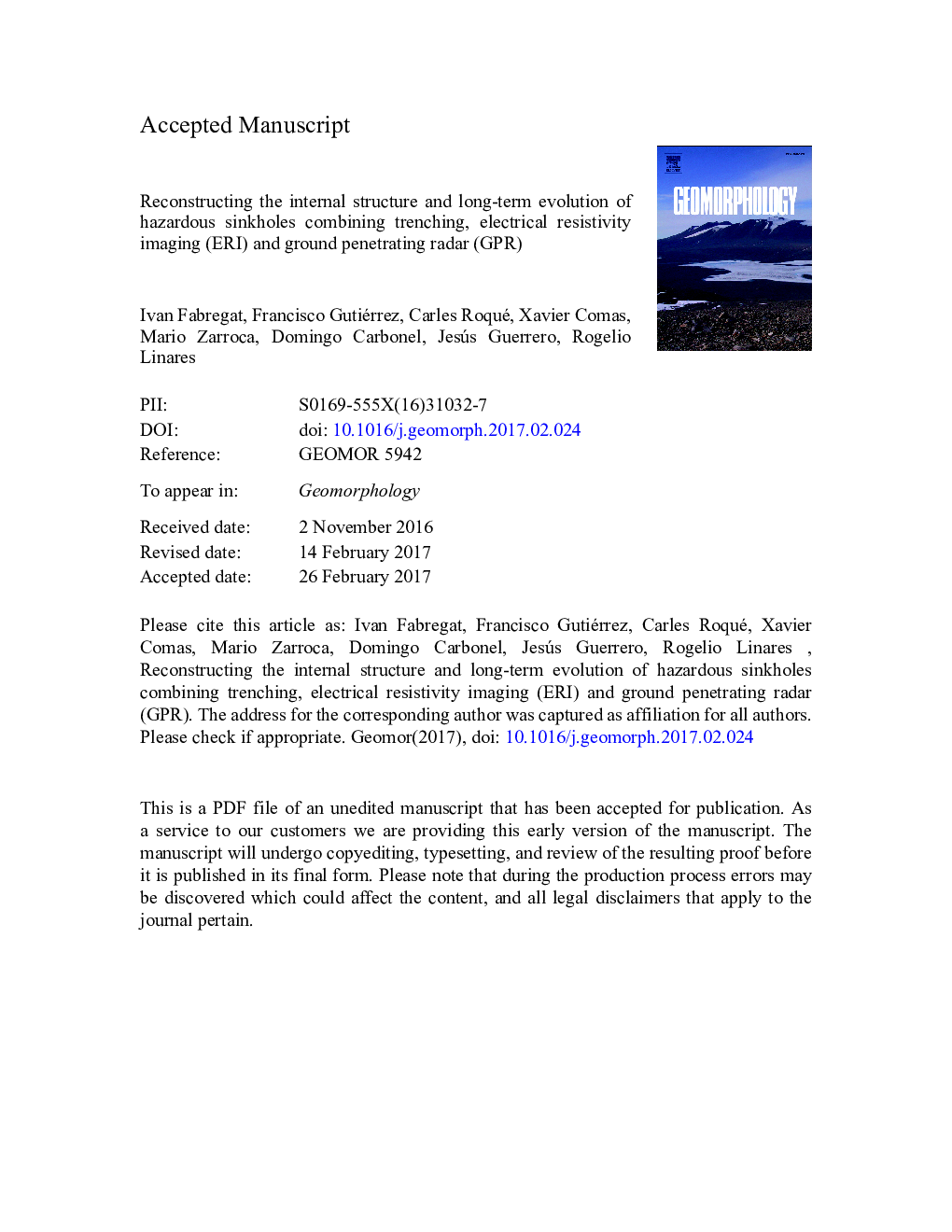| کد مقاله | کد نشریه | سال انتشار | مقاله انگلیسی | نسخه تمام متن |
|---|---|---|---|---|
| 5781047 | 1635364 | 2017 | 61 صفحه PDF | دانلود رایگان |
عنوان انگلیسی مقاله ISI
Reconstructing the internal structure and long-term evolution of hazardous sinkholes combining trenching, electrical resistivity imaging (ERI) and ground penetrating radar (GPR)
دانلود مقاله + سفارش ترجمه
دانلود مقاله ISI انگلیسی
رایگان برای ایرانیان
موضوعات مرتبط
مهندسی و علوم پایه
علوم زمین و سیارات
فرآیندهای سطح زمین
پیش نمایش صفحه اول مقاله

چکیده انگلیسی
The approaches aimed at characterising specific damaging sinkholes have received limited attention compared with other ground instability phenomena (e.g. landslides). Moreover, the practicality of the trenching technique in combination with numerical dating and retro-deformation analysis for sinkhole site-investigations has been barely explored. This work illustrates the advantages of combining geomorphic mapping, electrical resistivity imaging (ERI), ground penetrating radar (GPR) and trenching for sinkhole characterisation and shows how the trenching technique contributes to fill significant gaps that neither geomorphic nor geophysical methods can address. Two large sinkholes (>Â 200Â m long) related to the interstratal karstification of evaporites and generated by contrasting subsidence mechanisms (sagging, collapse) were investigated in the Fluvia Valley, NE Spain. Although GPR data may provide high resolution information on subsidence-related stratigraphic and structural features at shallow depth, the profiles acquired in the investigated sites with 100Â MHz shielded and 40Â MHz unshielded antennae provided limited insight into the internal geometry of the sinkholes due to reduced signal penetration related to the presence of conductive clayey material. The ERI sections satisfactorily imaged the general geometry of the sagging and collapse subsidence structures up to depths higher than 100Â m and clearly captured the basal contact of the low-resistivity sinkhole fill in the sections with adequate layout and resolution. The trenches, despite their limited depth (ca. 5Â m) allowed us to obtain valuable objective information on several key aspects of the subsidence phenomenon: (1) mechanisms (deformation style) and kinematics (progressive versus episodic); (2) limits of ground deformation; (3) temporal evolution (expansion versus contraction); (4) chronology and timing of most recent deformation phase; (5) rates of subsidence and sedimentation; and (6) the role played by subsidence in the development of lacustrine environments and the associated sedimentation patterns.
ناشر
Database: Elsevier - ScienceDirect (ساینس دایرکت)
Journal: Geomorphology - Volume 285, 15 May 2017, Pages 287-304
Journal: Geomorphology - Volume 285, 15 May 2017, Pages 287-304
نویسندگان
Ivan Fabregat, Francisco Gutiérrez, Carles Roqué, Xavier Comas, Mario Zarroca, Domingo Carbonel, Jesús Guerrero, Rogelio Linares,